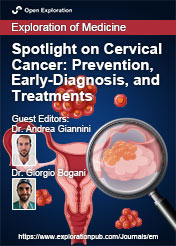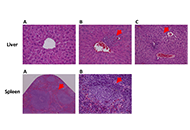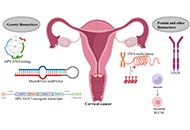
Spotlight on Cervical Cancer: Prevention, Early-Diagnosis, and Treatments
Guest Editors
Dr. Andrea Giannini E-Mail
Department of Maternal and Child Health and Urological Sciences, Sapienza University of Rome, Rome, Italy
Research Keywords: Cervical cancer, HPV, cervical dysplasia, radical hysterectomy, laproscopy, Robotic, surgery
Dr. Giorgio Bogani E-Mail
Gynecologic Oncology Unit, Fondazione IRCCS Istituto Nazionale dei Tumori di Milano, Milan, Italy
Research Keywords: Cervical cancer, HPV, cervical dysplasia, radical hysterectomy, laproscopy, Robotic, surgery
About the Special lssue
Cervical cancer (CC) represents one of the most common gynecological malignancies worldwide. Despite the strong implementation of prevention protocols, cervical cancer is still a source of concern, especially in developing countries. The HPV vaccine represents the crucial resource used in primary prevention, recommended with level A evidence. Available data show that the HPV vaccine is able to reduce the HPV infection prevalence by supporting the decrease in the development of precancerous and CC. By using the cervical smear and HPV-DNA test, there is an increase of cervical dysplasia, early-stage CC, and consequently its treatments. In the last decade, these data were confirmed in industrialized countries, with an increase of early-stage CC compared to women living in developing countries, where a large proportion of advanced or metastatic CC was diagnosed. CC treatment differs in accordance with the stage at diagnosis. In last years, various trials investigated the use of conservative treatment and minimally invasive surgery for CC. Its data highlighted the safety and effectiveness of this approach, and as a result, the 2018 ESGO/ESTRO/ESP guidelines, with level B evidence, stated that the minimally invasive approach is favored. However, the LACC trial questioned the oncological outcomes of this approach, proving an increased risk of recurrence and death. To date, the choice of an adequate surgical approach in CC is still debated. Considering the history of HPV infection and the development of CC, it’s crucial to implement prevention protocols with the aim to detect early diagnosis of precancerous lesions and CC. CC management is still a source of ongoing concern. Considering the involvement of this disease in young women, also looking for a pregnancy, early diagnosis and personalized treatment is essential. This special issue of Exploration of Medicine is dedicated to focusing on the most important advancements in the prevention, early diagnosis, and treatment of CC, providing an update that will contribute to establish CC tailored-management.
Keywords: Cervical cancer, early-diagnosis cervical cancer, cervical cancer prevention, cervical cancer screening, cervical cancer treatment
Published Articles



